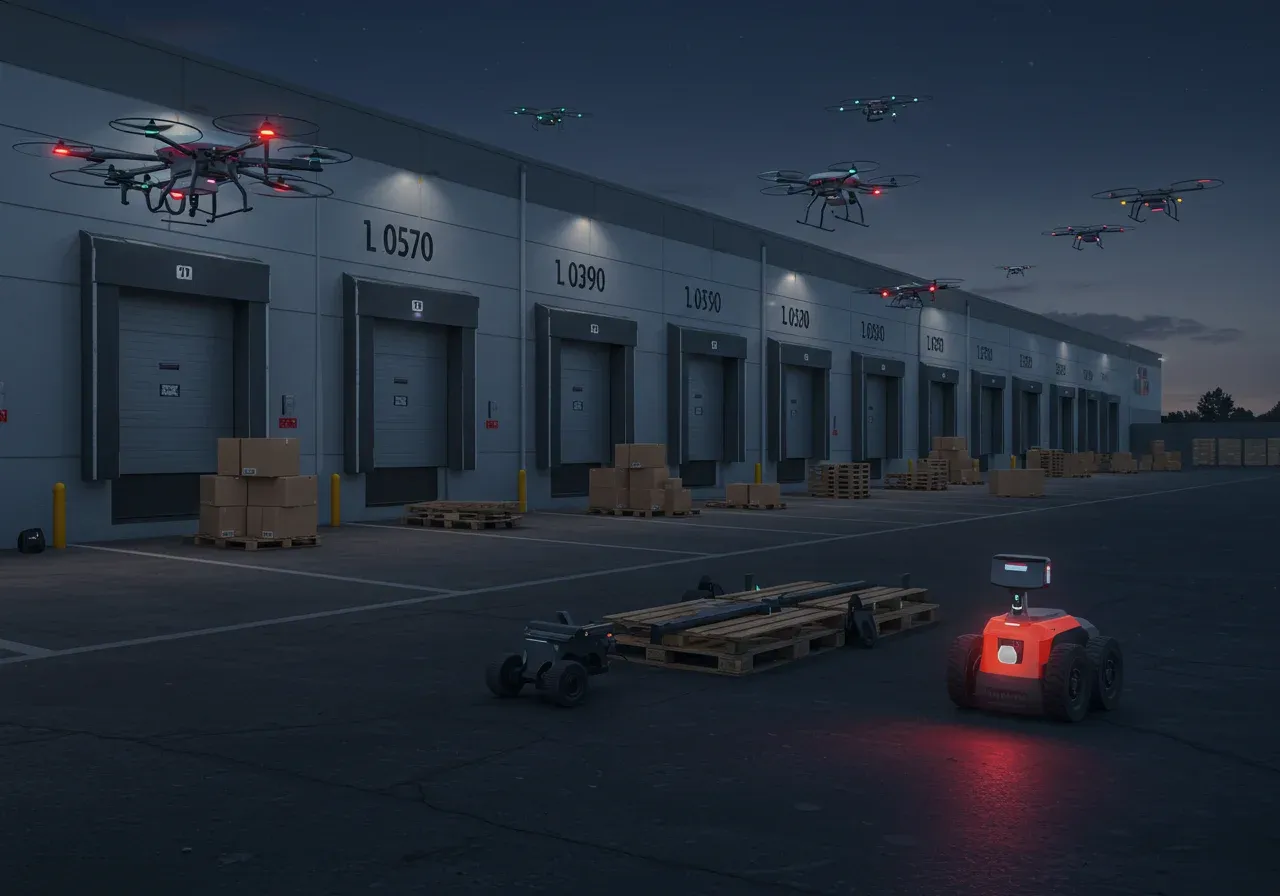
Maximize Efficiency with Equipment Monitoring
Leverage IoT and AI to track equipment health, reduce unplanned maintenance by 30%, and boost operational uptime. Gain real-time insights to enhance decision-making and streamline asset management.
Proactive Anomaly Detection


Boost Logistics Through Real-Time Monitoring
Industries We Support with Tailored Solutions
- Manufacturing: Implement automated inventory management to cut stock outages by 25%, enhancing production schedules and reducing downtime. Utilize predictive maintenance to extend machinery life by 20%.
- Energy: Optimize the supply chain for renewable energy projects, reducing lead times for turbine components by 15%. Streamline logistics for fuel distribution, ensuring 99.5% on-time delivery to power plants.
- Healthcare: Ensure timely delivery of critical medical equipment through precise last-mile logistics, cutting emergency response times by 30%. Utilize temperature-controlled supply chains to maintain pharmaceutical integrity.
- Transportation: Enhance fleet management with telematics, decreasing vehicle idle time by 40%. Improve route optimization, reducing fuel consumption by 10% and lowering carbon emissions.
- Retail: Simplify omnichannel distribution, improving order fulfillment speed by 35% across e-commerce and in-store platforms. Implement demand forecasting to reduce overstock and spoilage by 20%.
Core Technology Features in Logistics
- Real-time Data: Utilize live data streams to monitor and adjust supply chain operations instantly. This feature allows for dynamic rerouting of shipments, minimizing delays by up to 25% in response to traffic or weather disruptions, exemplified in urban freight management.
- Predictive Maintenance: Deploy machine learning algorithms to analyze equipment usage patterns, predicting failures before they occur. By utilizing predictive maintenance, logistics companies can reduce equipment downtime by 40%, ensuring consistent delivery schedules.
- Remote Monitoring: Implement remote monitoring systems to oversee global fleet operations. This capability facilitates fast response to anomalies and supports compliance with international shipping regulations, such as the SOLAS Container Weight Verification Requirement.
- Automated Reports: Generate detailed analytical reports that summarize logistics performance metrics. Automated reports provide actionable insights on key performance indicators (KPIs), enabling strategic decision-making and reducing operational inefficiencies by 30%.
- Integration Capabilities: Seamlessly connect with existing ERP and CRM systems to enhance data synchronization across departments. This integration supports end-to-end visibility and improved coordination, reducing order processing time by 20% in multi-modal transport solutions.
Advanced Monitoring Capabilities
Seamless System Integration
Our monitoring systems integrate effortlessly with ERP and MRP systems, ensuring data consistency across platforms. This integration reduces data silos by 25%, enhancing collaboration and decision-making efficiency.
Round-the-Clock Surveillance
With 24/7 monitoring, gain uninterrupted insights into equipment health, minimizing downtime by 15%. Constant oversight allows for immediate detection and resolution of anomalies, ensuring sustained operational efficiency.
Automated Issue Alerts
Leverage AI to receive real-time alerts on potential equipment failures via SMS and email. This proactive approach enables maintenance teams to preemptively address issues, decreasing unexpected failures by 20%.
Detailed Performance Metrics
Track vital KPIs such as throughput and utilization rates, providing insights for optimizing equipment efficiency. Regular metric analysis can lead to a 10% improvement in operational throughput.
Precision Control with Advanced Tech

Strategic Advantages of Monitoring Systems
- Reduced Downtime: Implementing continuous monitoring systems decreases unplanned outages by up to 40%, ensuring operational continuity and minimizing disruptions across supply chains.
- Increased Efficiency: With real-time data analytics, logistics operations can optimize routing, leading to a 25% reduction in transit times, enhancing overall supply chain speed and reliability.
- Enhanced Safety: Monitoring systems detect anomalies in equipment performance, preventing hazardous conditions which can reduce workplace accidents by 15% in high-risk industries like manufacturing and logistics.
- Lower Maintenance Costs: Predictive analytics forecast maintenance needs, enabling timely interventions that cut maintenance expenses by an average of 20% without compromising operational readiness.
- Prolonged Equipment Life: Consistent monitoring identifies wear and tear early, extending equipment lifespan by 30%, thus maximizing return on investment and reducing frequency of capital expenditures.
Implement Robust Solutions for Uptime
Achieve Operational Excellence
You may also be interested in
Maximize your potential with our seamless, end-to-end supply chain solutions.

Automation
Leverage state-of-the-art automation to optimize logistics, boosting operational accuracy by up to 30% while minimizing human error. Enhance supply chain agility and cut transit times significantly.

EDI
Enhance accuracy and speed in transactions by integrating EDI, reducing manual errors by up to 90%. Elevate supplier and partner interactions with seamless data exchange, driving efficiency across your logistics network.

Customer Relationship Management (CRM) Integration
Transform your logistics with seamless CRM integration. Improve customer interaction efficiency by 30%, increase order accuracy, and reduce response times, leading to higher customer satisfaction.